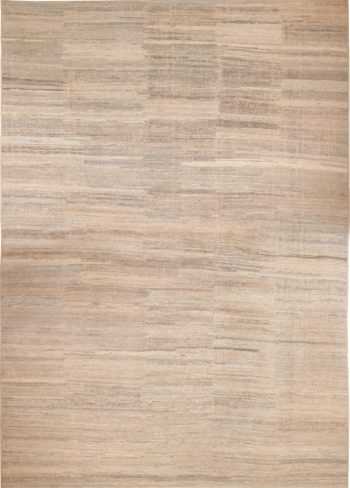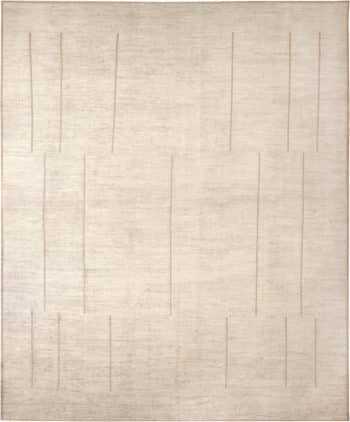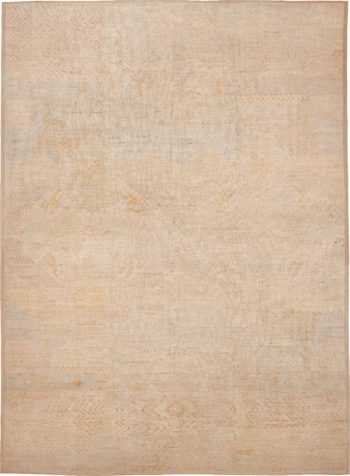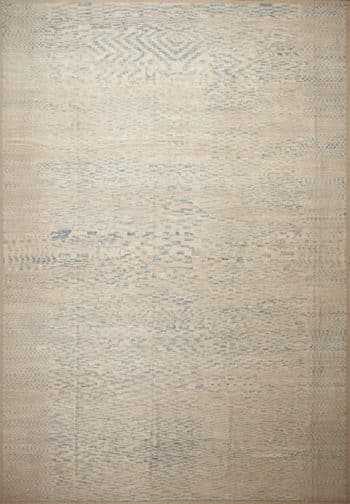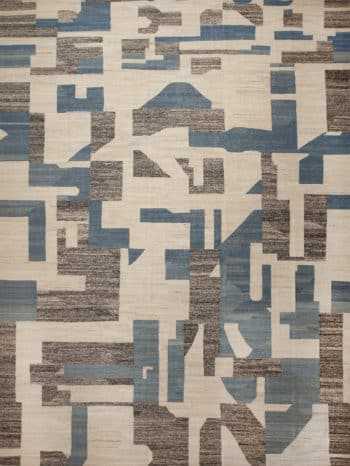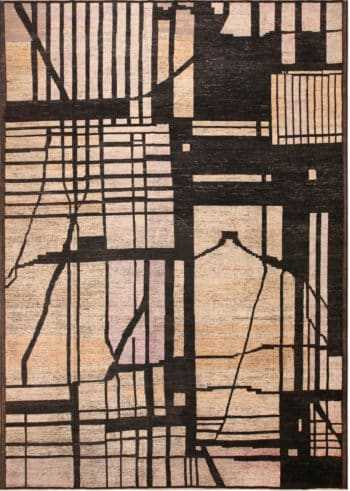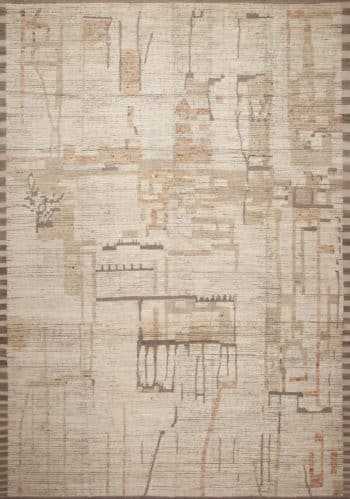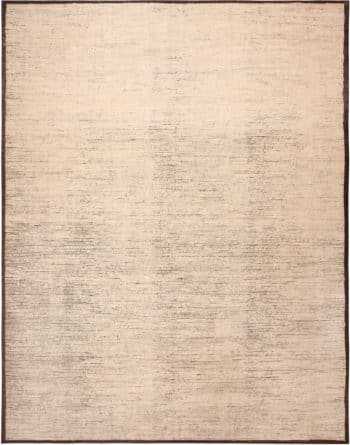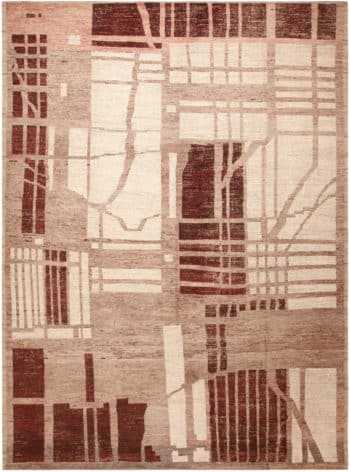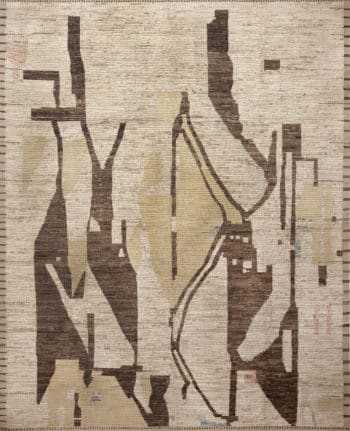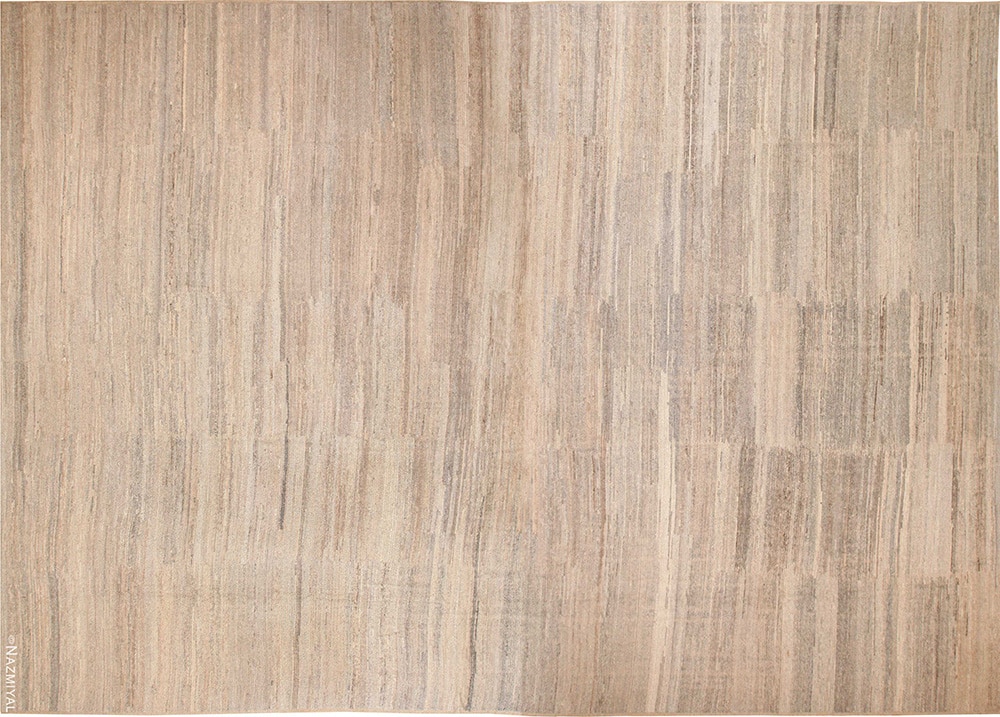Abstract Rugs
Shop our selection of more abstract rugs or those rugs that feature a solid color:
-
Oversized Beige Modern Moroccan Rug 60956
$26,950.00Size: 18 ft 9 in x 25 ft 8 in (5.71 m x 7.82 m) -
Oversized Modern Contemporary Neutral Minimalist Abstract Rug 11849
Size: 15 ft 1 in x 21 ft 7 in (4.6 m x 6.58 m) -
Oversized Neutral Ivory Cream Modern Decorative Contemporary Rug 11852
$28,665.00Size: 17 ft 8 in x 21 ft 1 in (5.38 m x 6.43 m) -
Cream Color Oversized Modern Moroccan Decorative Rug 60945
$26,600.00Size: 15 ft 4 in x 20 ft 10 in (4.67 m x 6.35 m) -
Oversized Decorative Contemporary Moroccan Area Rug 60944
$26,425.00Size: 15 ft 2 in x 20 ft 7 in (4.62 m x 6.27 m) -
Large Abstract Design Vibrant Bold Contemporary Area Rug 11842
$17,675.00Size: 14 ft 1 in x 19 ft 11 in (4.29 m x 6.07 m) -
Abstract Cream Light Blue Large Geometric Modern Area Rug 11821
$17,024.00Size: 13 ft 10 in x 19 ft 7 in (4.22 m x 5.97 m) -
Artistic Abstract Geometric Large Flat Weave Modern Contemporary Kilim Rug 11840
$9,695.00Size: 14 ft 4 in x 19 ft 5 in (4.37 m x 5.92 m) -
Large Calming Tones Ivory Cream Modern Chic Decorative Area Rug 11837
$17,675.00Size: 14 ft 6 in x 19 ft 5 in (4.42 m x 5.92 m) -
Large Primitive Motifs Modern Contemporary Rug 11825
$16,415.00Size: 13 ft 8 in x 19 ft 1 in (4.17 m x 5.82 m) -
Cream Color Modern Moroccan Style Runner Rug 61063
$3,675.00Size: 3 ft 4 in x 19 ft (1.02 m x 5.79 m) -
Large Earthy Grey Abstract Geometric Tribal Design Modern Flatweave Kilim Rug 11802
$8,505.00Size: 13 ft x 18 ft 8 in (3.96 m x 5.69 m) -
Soft Color Large Contemporary Abstract Geometric Modern Area Rug 11831
$17,465.00Size: 14 ft 11 in x 18 ft 7 in (4.55 m x 5.66 m) -
Cream Color Modern Moroccan Design Runner 61060
$3,150.00Size: 3 ft x 18 ft 7 in (0.91 m x 5.66 m) -
Large Light Ivory Cream Abstract Tribal Nomadic Primitive Modern Rug 11799
$15,120.00Size: 13 ft x 18 ft 6 in (3.96 m x 5.64 m) -
Large Cream Tones Modern Chic Area Rug 11843
$16,450.00Size: 14 ft 6 in x 18 ft 1 in (4.42 m x 5.51 m) -
Large Tribal Primitive Design Central Asian Rug 11782
$14,875.00Size: 13 ft 3 in x 17 ft 10 in (4.04 m x 5.44 m) -
Large Size Solid Light Ivory Cream Color Background Modern Wool Pile Area Rug 11785
$14,350.00Size: 13 ft x 17 ft 5 in (3.96 m x 5.31 m) -
Large Size Squarish Shape Abstract Minimalist Solid Cream Modern Area Rug 11834
Size: 15 ft 7 in x 17 ft 5 in (4.75 m x 5.31 m) -
Trendy Large Ivory Decorative Contemporary Modern Area Rug 11747
$13,265.00Size: 12 ft 2 in x 17 ft 5 in (3.71 m x 5.31 m) -
Large Tribal Berber Moroccan Beni Ourain Design Modern Contemporary Area Rug 11772
$14,105.00Size: 13 ft 2 in x 17 ft 1 in (4.01 m x 5.21 m) -
Large Artistic Abstract Contemporary Earthy Tribal Modern Area Rug 11790
$14,595.00Size: 13 ft 7 in x 17 ft 1 in (4.14 m x 5.21 m) -
Large Size Soft Light Ivory Cream Color Solid Abstract Design Modern Area Rug 11804
$15,260.00Size: 14 ft 4 in x 17 ft (4.37 m x 5.18 m) -
Soft Beige Large Square Modern Minimalist Area Rug 11841
Size: 16 ft 6 in x 16 ft 9 in (5.03 m x 5.11 m)
Learn More About Our Solid and Abstract Designed Area Rugs
Non descript and solid or more abstract rugs – While most antique rugs will fall neatly withing the two main design approach of – geometric rugs and floral rugs, there are a lot of other types of rugs that simply don’t fit in either of these rug pattern designations. That is why we created this category to house all those types of rugs that simply can group into one of the two main approaches.
Some of the rugs in this section will showcase rug designs that are very abstract and fluid like some of the most captivating antique art deco rugs, others may feature no design at all. Many of the iconic vintage Moroccan rugs may only boast a splash of color or variation of colors in an abstract way. Other types of rugs, especially the newer modern rugs as well as those rugs that have been custom made, might feature faint patterns and ghosty designs.
It is important to note that the rugs featured in this category may have been woven any point in time. We are not separating out the vintage from the modern and the antique. Not only were these rugs woven at different point in time throughout history, the rugs here come from a wide range of origins as well.
We will also include in this category the beautiful textile and embroideries that we cant call “floral” or “geometric”. These examples will include piece like the iconic mid century modern Verner Panton textiles and fabrics that we currently have available. We can also expect to see works by famous textile designers and rugs by artists. Examples of these may include works by artist Robert Jacobsen and Jan Cremer as well as some of the more iconic 20th century artists such as Paul Klee , Andy Warhol and Corneille as examples.
In addition to the above mentioned rugs, you might also find in this category, for example, Persian rugs that boast such primitive designs. Most of these will probably be tribal rugs that do not conform to the standard design format may also be found here.
What is an abstract rug?
An abstract rug is a type of floor covering that features a design characterized by non-representational, artistic, and often unconventional patterns. Unlike traditional rugs that might depict specific objects, scenes, or symbols, abstract rugs use shapes, lines, colors, and textures to create a visually engaging and expressive design.
The term “abstract” refers to the concept of representing ideas and emotions through non-literal or non-realistic visual elements. Abstract art, including abstract rugs, allows for a sense of creativity, individual interpretation, and a departure from traditional depictions of the physical world.
Characteristics of abstract area rugs:
- Geometric Shapes: Abstract rugs often incorporate geometric shapes, such as triangles, circles, squares, and irregular polygons, arranged in various patterns and configurations.
- Bold Colors: The color palette used in abstract rugs can be vibrant and striking, often featuring contrasting colors or bold combinations that catch the eye.
- Flowing Lines: Curved, flowing lines and swirls are common in abstract rug designs, adding a sense of movement and dynamism.
- Texture and Layers: Some abstract rugs use varying pile heights or different materials to create a textured effect, adding depth and dimension to the design.
- Unconventional Patterns: Abstract rugs may have asymmetrical or unpredictable patterns that do not adhere to traditional symmetry or representational aesthetics.
- Expressive Artistry: Abstract rugs are intended to evoke emotions and feelings rather than depict specific subjects. They often give the viewer room for personal interpretation and engagement.
Abstract area rugs are a popular choice for contemporary and modern interior spaces, as they can add a bold and artistic element to the decor. They serve as focal points and conversation starters in rooms where creativity and individuality are embraced. These rugs are used in various areas of the home, including living rooms, bedrooms, offices, and even some commercial spaces where an artistic touch is desired.
When incorporating an abstract rug into an interior design, it’s essential to consider how the rug complements the overall decor and color scheme of the room. Abstract rugs work well with minimalist or eclectic styles, and they can tie together different design elements in a unique and visually appealing way.
What is a solid rug?
A solid rug, also known as a plain or monochromatic rug, is a type of floor covering that features a single, uniform color throughout its entire surface. Unlike patterned or multi-colored rugs, a solid rug has no intricate designs, motifs, or variations in color.
Characteristics of solid area rugs:
- Single Color: Solid rugs are typically made using a single color, resulting in a consistent and uniform appearance.
- No Patterns or Designs: Unlike patterned rugs that feature intricate designs, solid rugs have a clean and simple look with no discernible patterns.
- Neutral or Bold Colors: Solid rugs can come in a wide range of colors, from neutral tones such as beige, gray, or ivory to more vibrant and bold hues like red, blue, or green.
- Versatility: Solid rugs are highly versatile and can easily blend into various interior design styles and color schemes.
- Textured or Plain: Solid rugs can have various textures, including shaggy, flatweave, or plush, providing options for different preferences and decor styles.
Uses of solid area rugs:
- Neutral Foundation: Solid rugs serve as an excellent neutral foundation that complements other decorative elements in the room. They provide a cohesive backdrop that allows furniture and decor pieces to stand out.
- Balancing Bold Decor: In rooms with bold or heavily patterned furnishings and decor, a solid rug can help balance the overall look and prevent the space from feeling too overwhelming.
- Highlighting Furniture: A solid rug can draw attention to the furniture placed on it, making it a great choice for showcasing statement pieces like colorful sofas or intricate coffee tables.
- Enhancing Minimalist Design: Solid rugs are often used in minimalist design schemes, where clean lines and simplicity are key elements. The rug helps maintain the uncluttered aesthetic of the space.
- Creating Contrast: Solid rugs can be used to create a visual contrast against patterned or textured walls and floors, adding depth and interest to the room.
Whether you’re aiming for a minimalistic, modern, or eclectic style, a solid rug can be a versatile and practical choice for grounding the design and setting the tone for the entire room.
How to decorate with solid and abstract design area rugs?
Decorating with both solid and abstract design area rugs can create a visually appealing and dynamic interior space. By incorporating these rugs thoughtfully, you can add texture, color, and personality to your decor.
Here are some tips on how to decorate with solid and abstract design area rugs:
- Choose a Focal Point: Decide which rug will be the focal point of the room. If you have a bold and colorful abstract rug, it can serve as the centerpiece, drawing attention and setting the tone for the rest of the decor. Alternatively, a solid rug can anchor the space, allowing other design elements to shine.
- Coordinate Colors: If you have an abstract rug with vibrant colors, use it as inspiration for the color palette in the room. Pick up a few key colors from the rug and incorporate them into your furniture, throw pillows, curtains, or wall art. For solid rugs, you can choose complementary colors or neutrals that harmonize with the existing decor.
- Create Contrast: Use the contrast between the solid and abstract rugs to your advantage. If the abstract rug is busy and colorful, opt for a more subdued and neutral solid rug. Conversely, if the abstract rug is muted, a bold and vibrant solid rug can add excitement and interest.
- Layering Rugs: Consider layering a smaller abstract rug on top of a larger solid rug to add depth and dimension to the space. This technique can also help define different areas within an open-concept room.
- Balance Patterns and Textures: If you have a room with multiple patterns and textures, use solid rugs strategically to create a visual balance. A solid rug can provide a resting point for the eye in a room with busy patterns on furniture or wallpaper.
- Define Spaces: In open floor plans, use rugs to delineate different functional areas, such as the living room and dining area. Use the abstract rug for the living room seating area and a solid rug under the dining table to create distinct zones.
- Size Matters: Pay attention to the size of the rugs in relation to your furniture. For the abstract rug, make sure it is large enough to fit all or most of the furniture in the seating area. The solid rug can be slightly smaller and placed under a coffee table or accent furniture.
- Consider Texture: If your abstract rug has a lot of texture or a raised pattern, you may want to balance it with a smoother and plainer solid rug to avoid overwhelming the space.
Ultimately, decorating with solid and abstract design area rugs allows you to strike a balance between boldness and simplicity in your decor. Experiment with different combinations and placements to find the arrangement that best suits your style and the overall ambiance you want to achieve.

